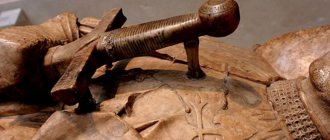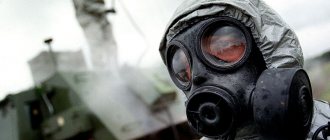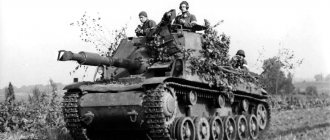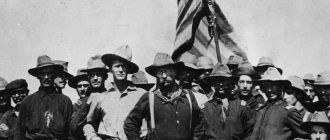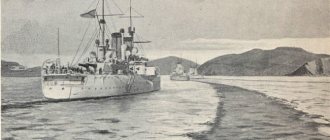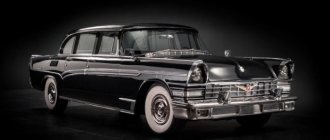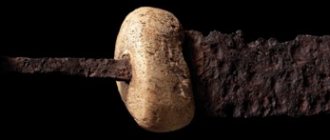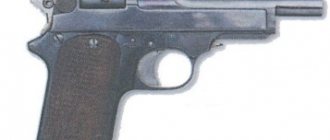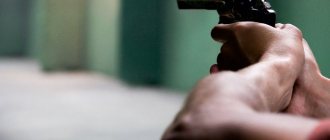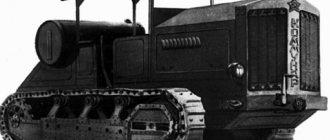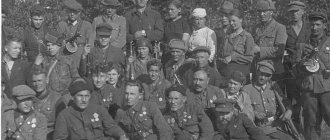In the early 30s, the monarchy in Spain fell, but the situation in the republic remained very unstable for several years. A relatively moderate left came to power, but they began an attack on traditional Spain. First of all, on the Church, which has always had a very serious position in Spanish society. Everyone who was dissatisfied with the left joined the right. By the mid-30s, both split Spain in half, having approximately the same number of supporters.
The Comintern, in the context of the sharp popularization of right-wing forces in interwar Europe, strongly recommended that all left-wing movements and parties unite in coalitions - Popular Fronts - to confront the right.
In the elections of 1936, the Popular Front, which united socialists, regionalists and anarchists, was several percentage points ahead of the right - nationalists and monarchists. The victory of the left brought another round of instability. Political violence spilled onto the streets. The situation became extremely aggravated on July 13, when the leader of the right-wing parliamentary opposition, José Sotelo, was killed by the left. The left began to actively take control of the army, creating its own cells in it. Under these conditions, the military decided to strike first and save Spain from the “Red Menace.”
On July 17, a military coup began in the Spanish colonies, which were relatively easily taken under control by the military. In mainland Spain, the rebellion began on July 18. The military managed to seize power in the central region, but in other regions it was retained by the Popular Front.
In response to the rebellion, the government declared the Red Terror, the main victims of which were primarily the clergy who found themselves in territories controlled by the Popular Front. In response, the military began terrorizing communists in their territories.
Most of continental Spain was controlled by the Popular Front, but the military managed to retain the central regions of the country. The civil war began.
USSR position
At first, the USSR did not intervene in the conflict at all. From the outside, the Republican position looked quite strong. They actually lost their army, which went over to the side of the rebels, but they controlled much larger and, importantly, developed territories. Almost all industry was in their hands, and they also controlled the country's gold reserves.
However, the military turned out to be more perspicacious than the politicians. While the Republicans were deciding whether to create a new army and, if so, how to form it, the military got its bearings and received support from Germany and Italy. German aircraft and the Italian fleet quickly ensured superiority at sea and in the air, thanks to which the rebels could receive supplies of weapons from Germany and Italy.
The support of the Francoists did not go unnoticed in the Kremlin, and Stalin also decided to join the conflict. In September 1936, the Spaniards announced the creation of an army, as well as the formation of international brigades that would be part of the army. The International Brigades were intended to serve volunteers from all over Europe, but not Soviet citizens, who most often served as officers under assumed Spanish names. Citizens of France, Germany, Poland, and Italy served in these brigades. Almost all of them were communists and did not have serious combat experience.
All roads lead to Rome
Franco had two empires as his allies - those that were built by Mussolini and Hitler.
The decisive factor was the support of the Duce, who had long-standing ties with the Spanish right. The first contacts began with the dictator Primo de Rivera, who visited Rome in 1923 and willingly adopted the Italian experience. But the transformation of Spain into a second Italy dragged on and was not completed.
Primo de Rivera and King Alfonso XIII of Spain
The fall of General Rivera and the establishment of the republic angered Mussolini. Right-wing conspirators and monarchists have become frequent visitors to Rome. The second man in the fascist hierarchy, Italo Balbo, promised the conspirators weapons and money. But the failure of the right-wing coup in August 1932 led to unexpected results. Benito Mussolini considered that the Republican position was very strong. And instead of planning new coups, fascist Italy established diplomatic ties with Republican Spain.
The establishment of strong ties was hampered by center-left Spain's orientation towards France. Mussolini feared that Spain would allow France to use the Balearic Islands as a naval base and would deny Italy access to the western Mediterranean.
The second problem was the socialists in power in Spain. Mussolini did not want to tolerate an anti-fascist state at his side. The bad example had to be burned out before it became contagious.
In 1934, Mussolini switched to openly sponsoring subversive actions against the republic - Balbo received a delegation of two far-right monarchist parties in Rome. The Duce promised ten thousand rifles, 200 machine guns and millions of cartridges. The training of militants began at the "boot". Through the Italian embassy in France, he sent money to the Spanish Phalanx and personally to Antonio Primo de Rivera.
Benito Mussolini
Together with the lured parties, organizations like CAUR (Comitati d'Azione per l'Universalita di Roma) legally operated in Spain. They were engaged in propaganda of fascist ideas and culture, and advertised the Italian experience. De facto, it was a network structure, a kind of “Fascist International”, where everyone who sympathized with Italian fascism was recruited.
Despite such active participation, the Duce was stunned by the coup in Spain. It took the rebel generals about two weeks to persuade the Duce to provide military assistance to the nationalists. At first Mussolini refused. He feared direct intervention from France and Great Britain. Fight two powers for the sake of Spain? There were no fools in Rome.
But through his own channels the Duce learned that France would refrain from entering the war on the side of the republic. Great Britain also decided not to go there.
The last straw was the USSR's diplomatic support for the Republicans. Fearing their quick victory would give Spain a left rudder course, the fascist dictator sent Franco 12 planes and a transport ship to transport his African troops across the Strait of Gibraltar.
(Photo source)
From now on, Mussolini begins to coordinate his policies more and more with the Reich. This was largely due to the influence of his son-in-law and Foreign Minister Galeatso Ciano, who favored Hitler and believed that the two growing empires should form a strong alliance.
In 1936, Count Ciano summoned the USSR Ambassador to Italy, Boris Stein, for a conversation. “All over the world there is a confrontation between fascism and its opponents, led by the USSR. You and I are on opposite sides of the barricades,” the Italian minister dotted the i’s.
The opponents in the coming war have been determined.
Subsequently, Franco’s support from the Duce only increased - 70-80 thousand Italian “volunteers” fought against the republic. The nationalists were given 660 aircraft, up to 150 tankettes, about a thousand guns and 10 thousand machine guns, and up to 250 thousand rifles. The Italians carried out a blockade of Republican ports and acted on the diplomatic front, actively supporting Franco.
Cash coupons from the directorate of the ceramic factory of Huerta del Rey (province of Burgos, Castile)
Franco remained grateful to the Duce until the very end. When he learned in 1943 that a coup had taken place in Rome and Mussolini had been overthrown, tears flowed from the eyes of the Generalissimo. He kept his love for the Duce in his soul until the latter’s death. Non-fascists are unable to understand this. But then, clenching his teeth, he crossed Benito out of his heart, so as not to spoil relations with his new patron - the USA.
Soviet specialists
If the Germans sent only a small Condor aviation legion to Spain, the Italians and Portuguese sent fairly large ground units. The USSR, for its part, sent exclusively military advisers and specialists. Nevertheless, many of them took part in the hostilities.
The Republicans did not have a shortage of soldiers; the problem was the lack of qualified personnel in units requiring special skills - in aviation and tank units. Therefore, Soviet specialists were divided into three groups: pilots, tank crews and anti-aircraft gunners.
Already in September 1936, the first Soviet aircraft arrived in Spain. 30 bombers with 15 pilots and ground support personnel, led by the future Lieutenant General Zlatotsvetov, who later became the chief of the Republican bomber aviation.
A month later, a shipment of several dozen fighters arrived. At first, the intervention of Soviet specialists was extremely limited. They were expected to participate only in planning operations as advisors, as well as in defensive actions.
The Francoists, meanwhile, took active steps, trying to seize Madrid, which remained in the hands of the Republicans. The city was subjected to intense bombing and it was here that Soviet pilots were actively used, repelling rebel air attacks and bombing their positions.
However, the Francoists had a clear advantage in the air, so already in November 1936, a large batch of anti-aircraft guns with Soviet specialists arrived in Spain. In the first months of the war, Soviet anti-aircraft gunners played a key role in the Republican air defenses. Almost all Republican air defense officers were Soviet citizens. And the future Major General Tykin held the position of senior adviser on air defense issues.
But the main task of Soviet specialists was to train local anti-aircraft gunners. For this purpose, special training courses were opened, taught by Soviet officers.
Soviet specialists were transferred either through France, which was very loyal to the Republicans, or by sea - this route was more dangerous due to the dominance of the Francoists and their allies at sea.
As a rule, they were provided with so-called Nansen passports (at that time issued to stateless refugees), but in some cases they were issued passports of other states. This was done through French recruitment points, through which European volunteers went to the international brigades. At these points, their passports were taken from them and sent by diplomatic mail to the USSR, where some of them were issued to Soviet military experts traveling to Spain, and the other part to illegal intelligence officers in other countries.
At the end of October 1936, the first Soviet tank crews began to arrive in Spain. At first, their task was also to perform the functions of advisers, as well as train local personnel. However, the successful actions of the Francoist army forced Soviet tank crews to take direct part in the battles.
Soviet specialists took direct part in hostilities until the fall of 1938. A total of 1,811 specialists were sent to Spain, with only a third of them permanently stationed there at any one time. The vast majority of them were pilots, then tank crews and instructors.
The total losses of Soviet specialists in deaths, deaths from wounds and accidents amounted to 189 people.
Reasons: how the rebellion matured
Spain was in a fever for a long time. The backward country needed modernization, but it was unclear who would carry it out and according to what scenario. In 1923, the coup was carried out by General Miguel Primo de Rivera. Having put an end to the rampant democracy and dispersed parliament, he established a dictatorship and began to restore order. But in 1930 the general resigned, and in 1931 the monarchy in Spain fell. The Second Republic was established.
Evgeny Bashin-Razumovsky Expert on historical issues
The First Spanish Republic existed in 1873–1874.
It didn't suit everyone. In 1932 there was an attempted military coup, and in 1934 there was a workers' uprising in Asturias.
In 1933, the far-right Phalanx party was created, headed by the dictator’s son, Antonio Primo de Rivera. At first, the FE sleeve insignia of the Falangists stood for “Spanish Fascists.” And only the need to create their own brand forced the party leader to announce that it actually reads “Spanish Phalanx”, Falange Española.
On February 16, 1936, the parliamentary elections were won by the Popular Front, which began to pursue a leftist program, including agrarian reform. Primo de Rivera Jr. was arrested on March 14, 1936 for preparing a rebellion. And in April, the leader of the Republican Left party, Manuel Azaña, became president.
The idea of an uprising was ripening among the military and the right.
Split in emigration
Events in Spain caused a real split in the ranks of the Russian emigration, who fled the country after the revolution or the Civil War. The fact is that not all veterans of the White Army were monarchists. A significant part of the White Guards were people of various views, among them were liberals, socialists, and Socialist Revolutionaries.
In addition, the Homecoming Union, which worked closely in Moscow, also played a big role in the split. In almost every country with a large emigrant diaspora, the USSR opened such unions, which were an important factor in influencing emigrants. The emigrants who found themselves separated from their usual environment, often without the opportunity to settle in a new country, experienced these circumstances very hard and their environment was fertile for agitation. However, by the beginning of the 30s, the USSR closed itself off from the outside world and practically stopped accepting emigrants back.
In general, the division among emigrants was along professional lines. With the exception of a small part of the military who, in emigration, began to sympathize with the Soviet state, most of them took a position of intransigence. “Civilians” were more likely to believe in the “rebirth” of the USSR.
Of course, the events in Spain could not leave anyone indifferent. They were too similar to the events in Russia 19 years ago. The military saw in Franco the Spanish analogue of Kornilov and believed that he had succeeded in what the Russian general had failed to do. The more left-wing part of the emigration (including Kerensky) also compared Franco with Kornilov, but this time in a negative sense.
The camp of irreconcilable anti-communists perked up, many officers decided to shake off the old days and began to get ready for war. The desire to get to Spain was so popular that a veteran of the Volunteer Army and one of the most prominent military historians, Kersnovsky, published an extremely emotional letter in the press: “When will we finally wise up and stop crucifying ourselves for strangers? Why on earth and why are we shedding streams of tears and ink in the name of some completely unnecessary, alien and indifferent Spain? And if only there were tears and ink! There were Russian people, Russian officers who went to shed their blood on the fields of La Mancha, rescuing the descendants of Don Quixote.
Show me a Spaniard who would protest against the destruction of the Cathedral of Christ the Savior! If you don’t know: that’s great. But I will show you a Russian officer, tubercular, without the right to work, with a confiscated passport, which not so long ago - just a few months ago - . right-wing Spaniards and g.g. the right French were throwing, like a ball, across the Pyrenees! This crippled and persecuted Russian staff captain of ours deserves a thousand times more of our attention and compassion than all the Spanish priests taken together.”
Skorodumov, a veteran of the First World War and the Civil War, entered into a debate with Kersnovsky, who wrote a response letter in which he argued that the duty of a Russian officer was to fight the Bolsheviks, wherever they were.
Most of the emigrants still preferred to follow Spanish events from afar. Many veterans were prevented from going to war by age and illness. Nevertheless, the most active and irreconcilable ones found a way to get into this war.
The main causes of civil conflict in Spain. Main participants
By 1936, the country approached in a state that threatened to turn into another civil confrontation. The indirect reason for the emergence of civil confrontation in Spain can be called the struggle of ideologies. One half of civil society sought to move along the socialist path of development, betting on the next political reforms and socialist principles. Another part of the country’s population was imbued with nationalist ideas professed by the Phalangists, members of the fascist organization “Phalanx”.
Phalangists
By that time, in Spain, nationalist ideas preached by the leaders of Nazi Germany and Fascist Italy were gaining popularity among certain circles. Nazi propaganda fell on prepared ground. In 1936, the country entered a period of protracted economic crisis. The current government was unable to cope with the developments. Efforts made to overcome negative phenomena in industry and agriculture turned out to be futile or insufficient. Agrarian reform, on which Spanish society placed a serious emphasis, failed.
Protests
The standard of living of the Spanish peasant fell to an all-time low. Things were no better in the city, where plants and factories were closing en masse, and the civilian population was rapidly losing their social gains. In such a situation, Republican leaders found broad support among civil society. On the other hand, among their opponents, nationalist ideas were accepted. The nationalists, in their slogans, portrayed socialists and the influence of communist ideology as the main culprits for the current situation of the Spaniards.
In other words, a difficult internal political situation has developed in Spain. Each of the opposing sides openly called for revolutionary changes. Republicans at every corner advocated for the overthrow of the bourgeois, bankrupt government, nationalists called for the destruction of any manifestations of socialist and communist ideology. Any rash step by political opponents could become the spark from which a civil military conflict could flare up. These two camps are future participants in the Spanish Civil War, each of which had its own allies, sympathizers and supporters.
White for white
After the outbreak of the conflict, the EMRO, which united most of the former military men, attempted to transfer Russian volunteers for Franco through France to Spain. It was assumed that they would be transferred to the border in small groups, after which they would join a detachment and establish contacts with Franco’s representatives. The first group safely left for the border town, but the second was arrested by the French, who secretly supported the Republicans (volunteers traveling to Republican Spain encountered no obstacles). Soon, the leader of the EMRO, General Miller, was captured by NKVD agents and the operation was curtailed.
Volunteers had to find the necessary contacts themselves and get to Spain. In addition, Franco's army was generally not very interested in volunteers and did not set up recruitment centers, unlike their rivals.
The Francoists had enough soldiers and weapons; the Italians, Germans and Portuguese provided them with serious support. Therefore, they often simply refused the services of volunteers who wanted to join their ranks. Thus, they refused to accept a group of Russian Cossacks from Yugoslavia, since they set the condition that their families would be provided with material support in the event of their death. In addition, the Spaniards were not very well versed in Russian history and considered all Russians to be “red” by default.
The first Russian volunteers in Franco's units were four veterans of the White Army: generals Fok and Shinkarenko, captain Krivosheya and staff captain Polukhin. Their desire to go to war was so great that they traveled through the desert in Spanish Morocco to cross the border. There were some misunderstandings: the Spanish border guards mistook them for communist spies and they managed to avoid big trouble only because the officer was well aware of recent Russian history.
Major General of the Volunteer Army Fok was a veteran of the First World War, and during the Civil War he served as chief of artillery under Wrangel. At the start of the Spanish War, he was already 57 years old, but he was in excellent physical shape, which he demonstrated to the Spaniards.
Shinkarenko was one of the first officers to join the Volunteer Army, even when it numbered only a few hundred people.
For the Francoists, Russian volunteers were uninvited guests. Although they accepted them into service, in most cases, they had to agree to a reduction in rank. Thus, General of the Volunteer Army Fok was enlisted as a lieutenant. And General Shinkarenko was even a private (but later promoted to lieutenant). White army officers with the rank of captain-major could not count on more than the rank of sergeant or warrant officer.
The largest emigrant formation of the Francoists was the Russian detachment of the Donna Maria de Molina battalion. More than 20 volunteers served there. The detachment's confessor was the former Prince John (Shakhovskoy) - the future Bishop of San Francisco and one of the most prominent figures of the ROCOR. Most of the Russian emigrants were dispersed to other parts, and the number of volunteers in them did not exceed four or five people. Moreover, the Donna Maria battalion was not part of the regular army, but was a formation of Requete - Carlist monarchists who advocated the restoration of the monarchy with a descendant of Don Carlos on the throne.
Another 12 Russian volunteers ended up serving in the Italian Expeditionary Force, which was not part of the Francoist army.
The vast majority of emigrants served in infantry units, and all Soviet specialists served in aviation, air defense or tank units. Nevertheless, at least one fact of a military clash in the air between them has been accurately confirmed. One of the few emigrant pilots, Lieutenant Marchenko, who was flying a bomber, collided in the skies over Zaragoza with a squadron of Soviet fighters under the command of Captain Eremenko. His plane was shot down, but he managed to land it, but already on the ground he was shot by the Red Spaniards. Nevertheless, the Soviet pilots literally ordered the Spaniards to bury the deceased pilot in a military cemetery, which the Spaniards usually did not do to their enemies.
The exact number of emigrants who fought on Franco’s side is still not known for sure. Various sources indicate figures from 72 to 150 people. 34 of them died.
Defense of Madrid
The fall of the capital could have had catastrophic military, moral and political consequences for the Republic, but Franco's advance seemed unstoppable. The government left Madrid for Valencia. Command of the troops defending Madrid passed to General José Miaja.
The Republican militia, which the better organized Francoists beat “in the field”, with their backs on the streets of Madrid, became much stronger. Thousands of its residents rose to defend the city.
“Tram drivers, coming face to face with the enemy, turned the cars into barricades, took rifles from wounded or killed soldiers, and often just picks and shovels - any weapon that could kill the Nazis.
Hairdressers, waiters, and office workers did the same. That's it!.. The women, taking coffee, cognac and other products, went to the front line to reinforce the militia. They spoke the most tender and most cruel words to the fighters. They hugged the brave and mocked those who hesitated... Each quarter of the city erected its own defensive structures,” said the communist Republican commander Enrique Lister. Residents of Madrid suffered losses even before the battle began in the city - Italian and German planes bombed it. Soviet pilots challenged them in the air. Despite the danger, Madrid residents gathered in the streets and followed the progress of the air battles.
A Republican detachment is fighting on the Ebro River. October 1938
On November 7, the Francoists, under the command of General Varela, stormed Madrid. The main blow was delivered through the Casadel Campo park. There were air battles over the city, in which Soviet, German and Italian pilots measured their strength. The capital was defended by up to 30 thousand soldiers. There were about 20 thousand Frankists, but they were much better armed and organized. Particularly dangerous were units of the colonial army, staffed by experienced Moroccan warriors.
The newly formed 11th International Brigade, the first internationalist formation (about 1,900 fighters), arrived in Madrid. On its site, the Francoists crossed the Monzanares River and moved towards the university campus, but the internationalists repelled this attack. On November 11, a three-thousand-strong column of the anarchist Durruti and the 12th International Brigade arrived in the city (although incomplete - only 1,600 fighters). These reinforcements increased the Republican army to 36 thousand people. The party affiliation of the fighters played an increasingly smaller role. They preferred to obey the headquarters closest to their positions, not being interested in the party affiliation of its officers.
On November 12, after continuous attacks, there was a lull. But this was the eve of the last and most dangerous assault on the city. On November 15, the attackers attacked the university campus, which was defended by the 5th Motorized Brigade, three columns (including Durruti) and part of the 11th International Brigade. The Francoists broke into Moncloa Park and the town itself. Fierce fighting broke out here - the university campus could turn into a gap through which Varela would break through to Madrid. The Moroccan vanguard moved through Moncloa Square to the streets of Calle de la Princesa and Paseo de Rosales. It was very risky - just walk through these streets to find yourself in Plaza de España, in the very center of Madrid. But with a counterattack from DURRU™ the Moroccan vanguard was destroyed. General Miaha also arrived here, and personally took part in the barricade battles. The anarchists returned to Moncloa Square.
On November 17, it became clear that Varela no longer had the strength to move beyond the campus or even take it entirely. But fierce fighting continued here until November 23. In the November Battle of Madrid, more than 10 thousand people died on both sides.
On November 19, Durruti was mortally wounded in Moncloa Square. The funeral of the anarchist leader, who died on November 20, turned into a grandiose demonstration - about 200 thousand people saw him off on his last journey.
On December 13, the Francoists tried to bypass Madrid, breaking through between the capital and the mountains of Guadarrama. First, it was necessary to cut the road to La Coruña. Four brigades with 18 thousand soldiers went on the offensive. On December 14, the Francoists took the town of Boadilla, but it was immediately recaptured with the help of tanks under the command of D. Pavlov, the same one who would command the Western Front of the Red Army in the tragic June 1941... A new wave of the Francoist offensive covered Boadilla, where two battalions were surrounded international brigadiers They barely made their way back, leaving mountains of their own and enemy corpses. At Christmas there was a pause in the battle. Having regrouped and received reinforcements, the Francoists launched a new offensive on the highway.
Spanish city bombed by German aircraft
Madrid and the surrounding area were defended by Miaja's army corps, which included five divisions. The highway to A Coruña was defended by the Modesto Division, which included both regular troops and militia formed by workers' organizations, including the predominantly anarchist Mera Brigade. On January 3, the Francoists approached the highway near the town of Las Rozas. Fierce fighting began here. Attacks and counterattacks replaced each other. The parties, as during the First World War, dug into trenches. Republicans clung to the numerous country houses and villas in the area. On January 5, 1937, a barrage of fire from German bombers and Italian tanks fell on the Republican positions. The shadow of disaster hung over the Madrid front. The republic's reserves and units from other fronts were urgently transferred to the highway. In Las Rozas, the encircled international brigadiers, mostly Germans, continued to hold out, but at Pozuelo the Francoists still cut the highway. Mera prevented the enemy from advancing from Las Rozas further to Guadarrama. On January 11, in the fog, the 12th and 14th international brigades, transferred from other sectors of the front, entered the battle. They reached Las Rozas, where the last fighters of Thälmann’s international battalion were still holding out. Soviet tanks entered the breakthrough. As a result, the Francoists left behind only a small section of the highway. By January 15, the opponents dug into the ground, and the battle fizzled out, claiming the lives of about 15 thousand people.
By the beginning of 1937, the main enemy forces were concentrated in the Madrid area - 40-60 thousand on both sides. The Spanish War became, like World War I, a war of attrition.
White for red
Another part of the emigration joined the Republicans and joined the international brigades. These people were recruited through the Homecoming Union and hoped to return to the USSR by serving in international brigades.
In most cases, these were no longer emigrants, but children of emigrants who remembered Russia very vaguely, since they were still very young. Unlike their fathers, they did not have an inflexible intransigence, and thanks to the propaganda of Soviet agents, they sometimes developed a very bizarre idea of \u200b\u200bthe Soviet country. Many of them, who had already grown up in emigration, themselves held moderate socialist views.
But there were also Civil War veterans among them. For example, General Esimontovsky, whose appearance in the international brigades surprised everyone: he fought in the White Army, and in exile he remained a convinced monarchist and was not seen in relations with Soviet agents. Nevertheless, he served in one of the international brigades with the rank of captain.
In addition, Major General Dyakonov fought on the side of the Republicans, who did not take part in the Civil War, but was a general in the pre-revolutionary army (unlike the others). At one time, he was close to Kerensky (thanks to which he became a general), and from the beginning of the 20s he was recruited by the OGPU and regularly worked for the Soviet special services. Actually, it was thanks to Dyakonov that the leader of the EMRO, General Kutepov, was lured into a trap and captured by Soviet agents in Paris. True, Dyakonov did not fight in Spain, but carried out orders from the Soviet intelligence services.
Another interesting figure was Lev Savinkov, who served with the rank of captain in one of the international brigades. He was the son of the famous Socialist Revolutionary terrorist Boris Savinkov, and his maternal uncle was another famous Socialist Revolutionary terrorist and his father’s subordinate Lev Zilberberg. Savinkov was born in Paris and never lived in Russia, which did not prevent him from holding leftist views. It is interesting that his actual guardian, who promoted him in his career, was NKVD agent Syroezhkin, whom some researchers consider the direct killer of his father, Boris Savinkov, already in the USSR.
Unlike the Francoists, who even had a surplus of officers and did not appoint foreigners to high positions, the Republicans willingly appointed foreigners to high command posts due to the huge lack of command personnel.
One of the Soviet specialists, General Vetrov, in his memoirs reported on hundreds of Russian emigrant volunteers in international brigades. According to Republican documents, there were 340 Russians in their international brigades.
Battle of Guadalajara
Desperate to take Madrid head-on, Franco hit the rear of the Madrid Republican front through the city of Guadalajara, located northeast of Madrid.
The best units of Franco were concentrated against Guadalajara - 15 thousand Moroccans led by Jose Moscardo, four divisions of the Italian corps with a total number of 35 thousand people with 250 tanks under the overall command of Mario Roatta. On March 8, they moved forward, trying to make their way to Guadalajara through the small towns scattered in the mountainous area to the north.
Initially, the fascist offensive was opposed by the 12th Republican Division - 10 thousand soldiers, of which slightly more than half were armed. Its front was quickly broken through. But soon all free units of the Central Front were transferred to the scene of action; from them the 4th Army Corps was formed under the command of Enrique Jurado. Now facing Moscardo were Lister’s 11th Division, the 11th International Brigade and three other brigades, mostly controlled by the Communists. The 14th division of the anarchist Cipriano Mera and the 12th international brigade, which included the Italian battalion, acted against the Italians. The Italians - fascists and anti-fascists - had to face off on Spanish soil. Although the number of Republicans doubled, the Francoists retained more than double their superiority in manpower. The Republicans only had 60 Soviet tanks, but their quality was higher than that of the Italians.
The Republicans are fighting the Francoists in Teruel. January 1938
The battle on the ground was accompanied by battles in the air and even natural disasters. The soldiers went on the attack, sometimes under an icy downpour, sometimes in the cold, unusual for the southerners - the Spaniards and Italians, who fought on both sides of the front. Near the town of Brihuega, near the Ibarra Castle, Italian fascist Blackshirts and Italian international brigadiers clashed. Anti-fascists captured the castle, driving the enemy out of it.
On March 11, the fascists broke through the front of the communist Lister near the town of Trihuega and rushed to Guadalajara. Only with the help of Soviet tanks and aircraft was it possible to stop the Nazis at Toriya and recapture Triuega. In the Mera sector, the Italians were stopped behind Brihuega, after which the Republicans began to launch counterattacks here too. On March 12, the Italian fascist corps was forced to go on the defensive.
On March 14, the commander of the Central Front of the Republic of Miaja arrived in the Guadalajara area, and he and his commanders began planning a counterattack. Republican counterattacks showed that the fascist wedge could be squeezed by the Republicans on both sides. The 11th and 12th divisions, together with the 11th international brigade, pressed on him from the west, and Mera's 14th division and the 12th international brigade from the east. Despite the fact that the Nazis maintained a double superiority in forces, the Republican command decided to launch a counter-offensive. For this purpose, the anarchist Mere was even allocated 16 tanks. He, together with the 12th International Brigade and the 1st Assault Brigade, was to take Brihuega from the east, while Lister and the 11th International Brigade were to strike from the west.
On March 18, the counteroffensive began. The pouring rain and mud did not stop the Republicans' advance. They rushed into Brihuega from the east and north. The assault brigade lay down, and Mera personally raised the soldiers to attack. Under the threat of encirclement, the Nazis fled. 300 Italians were captured.
The counter-offensive continued. The success of Measure predetermined the general defeat of the Italians on March 18, and Roatta decided to withdraw. Pursuing the fascists, the Republicans put them to flight.
On March 20, the Italians gained a foothold near Guadalajara at the small towns of Ledanqui and Alaminos, after which the battle soon ended.
The battle of Guadalajara was of great importance for the entire course of the war. In the Republican part of Spain it caused a surge of enthusiasm. It seemed that a turning point had come. The Nazis lost the initiative. Now the Republicans could choose where to strike. But it was not possible to realize this advantage due to the outbreak of political struggle provoked by opponents of Largo Caballero.
Posters of Spain during the Civil War and World War II
Winter is hostile, but we will win in greatcoats. Public Domain
Where six letters (note: 6 letters = “España”) echoed in our souls with a loud cry of war, there tomorrow the rejoicing of victory will be heard. Public Domain
The invader is near! Public Domain
And after that, what a wonderful stay in Spain will be! Public Domain
Keep this slogan in your heart: attack and win! Public Domain
The army needs you! Public Domain
The commander-in-chief speaks. Public Domain
Blame the murderous conspirators! Children and women are dying innocently! Free people are disgusted by everyone who recognizes fascists. The victims are before you. “We accuse the murderers of children and women!” Republican poster from 1937, issued after the bombing of Guernica. Public Domain
Sturdy column. A revolution in the village will give you land. Public Domain
CNT and UGT are the National Confederation of Labor and the General Union of Workers respectively. Public Domain
Bottom line
After 1943, serious allied ties between Franco and Hitler practically disappeared. Caudillo even stopped offering the Fuhrer to send the Spaniards to the Eastern Front at German expense. I knew it was useless, the Reich had no money anyway. In October 1943, submitting to pressure from the Anti-Hitler Coalition, Franco recalled home most of the Blue Division.
A couple of thousand of the most stubborn Phalangists remained on the Eastern Front.
The Axis countries prudently refused to use the military capabilities of Francoist Spain even when every soldier counted. The Third Reich did not take advantage of Franco's "generous offer". And in vain! If they had taken advantage, look, the Reich would have collapsed a couple of months earlier, and Franco would have repeated the fate of Mussolini. But history does not know the subjunctive mood. The Frankist regime survived until 1975.
